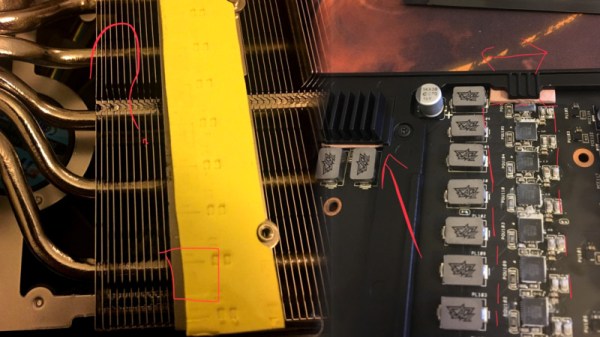Did artificial intelligence just jump the shark? Maybe so, and it came from the legal world of all places, with this report of an AI-generated victim impact statement. In an apparent first, the family of an Arizona man killed in a road rage incident in 2021 used AI to bring the victim back to life to testify during the sentencing phase of his killer’s trial. The video was created by the sister and brother-in-law of the 37-year-old victim using old photos and videos, and was quite well done, despite the normal uncanny valley stuff around lip-syncing that seems to be the fatal flaw for every deep-fake video we’ve seen so far. The victim’s beard is also strangely immobile, which we found off-putting.
thermal paste4 Articles
Hackaday Links: June 2, 2024
So you say you missed the Great Solar Storm of 2024 along with its attendant aurora? We feel you on that; the light pollution here was too much for decent viewing, and it had been too long a day to make a drive into the deep dark of the countryside survivable. But fear not — the sunspot that raised all the ruckus back at the beginning of May has survived the trip across the far side of the sun and will reappear in early June, mostly intact and ready for business. At least sunspot AR3664 seems like it’s still a force to be reckoned with, having cooked off an X-class flare last Tuesday just as it was coming around from the other side of the Sun. Whether 3664 will be able to stir up another G5 geomagnetic storm remains to be seen, but since it fired off an X-12 flare while it was around the backside, you never know. Your best bet to stay informed in these trying times is the indispensable Dr. Tamitha Skov.
Gamers Rejoice: Here’s A Fix For ASUS Strix Vega 64 Thermal Issues
Every year, we demand our computers to be ever faster, capable of delivering progressively more eye-watering graphics and doing it all as reliably as ever. Unfortunately, sometimes, new designs miss the mark. [Cloakedbug] was having issues with voltage regulator temperatures on an ASUS Strix VEGA 64 — one of the latest RADEON graphics cards on the market — and decided to investigate.
Right away, issues were apparent; one of the main thermal pads was making poor contact with the FETs it was intended to carry heat for, and was poorly sized to boot. In a show of poor quality, the pad wasn’t nicely sized for the aluminium plate it was attached to, and was applied in a rather haphazard manner. Suspecting this was perhaps one of the root causes of the card running hot, the decision was made to replace the pad with something more suitable.
Specifying a thicker pad that was properly sized to the heatsink plate was the order of the day, and a couple of other smaller heatsink pads were also replaced, all with Thermal Grizzly Minus Pad 8. [Cloakedbug] reports a temperature drop of over 30 degrees C under load on the VR SOC bank, down from 115 C initially. It sounds like this will go a long way to keeping the card happy and healthy over time. Looking around the web, there’s definitely a few reports of thermal issues out there, so this could be a useful fix if you’re having trouble with the same card at home.
In the end, it’s a simple, tidy fix to an expensive piece of hardware that really should have shipped with this sorted from the factory. We’ve seen a fair few thermal fixes over the years here, like this one involving a thermal camera as a diagnosis tool.
[Thanks to Keith O for the tip!]
Diamond Thermal Paste: Update

The need to conduct laboratory-style experiments runs deep in some people. [Freddyman] built an apparatus to test out several commercial and homemade thermal pastes, including the DIY diamond thermal grease we reported on last month. He setup each experiment in the middle of an air conditioned room, ran the heat sink fan for 30 minutes to equalize the temperature, then turned on the DIY heat generator that the paste and heat sink were connected to. He’s got a lot of data from tests he ran with the eight thermal conductors; air (using no paste), Arctic Silver 5, Ceramique, Dow thermal fluid, pure silicone oil, silicone and diamond slurry, Dow fluid with diamonds, and the Inventgeek.com remake.
One of the big problems with DIY paste is the air bubbles that are introduced into the slurry as you mix in the diamonds. All of the homemade pastes except one were put in a vacuum chamber in an attempt to remove tiny bubbles. The one that wasn’t put in the vacuum performed the worst of all the thermal conductors. In all cases, the commercially available products performed quite well while the DIY solutions delivered mixed results.











